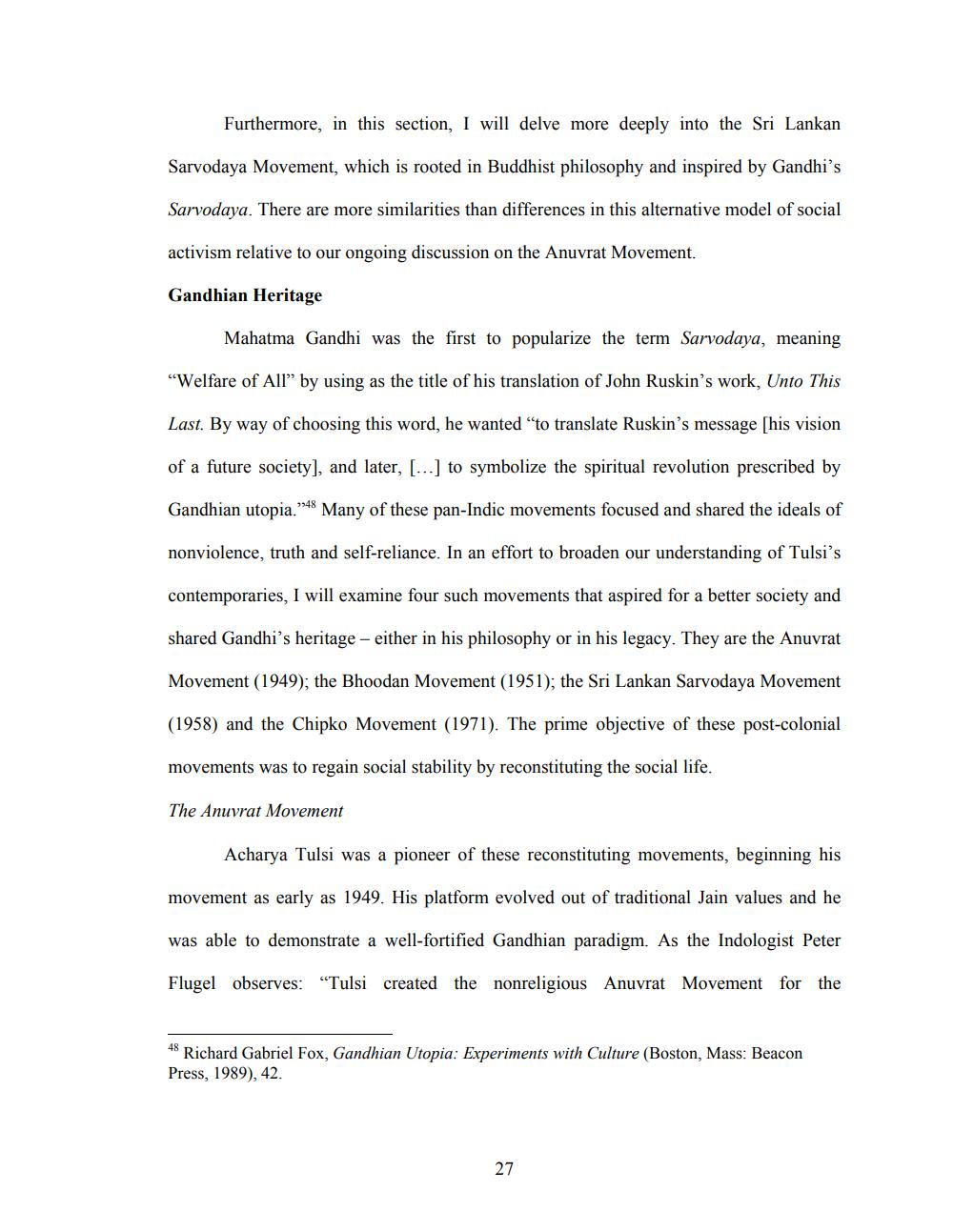________________
Furthermore, in this section, I will delve more deeply into the Sri Lankan
Sarvodaya Movement, which is rooted in Buddhist philosophy and inspired by Gandhi's
Sarvodaya. There are more similarities than differences in this alternative model of social
activism relative to our ongoing discussion on the Anuvrat Movement.
Gandhian Heritage
Mahatma Gandhi was the first to popularize the term Sarvodaya, meaning
"Welfare of All” by using as the title of his translation of John Ruskin's work, Unto This
Last. By way of choosing this word, he wanted to translate Ruskin's message [his vision
of a future society), and later, [...] to symbolize the spiritual revolution prescribed by
Gandhian utopia."48 Many of these pan-Indic movements focused and shared the ideals of
nonviolence, truth and self-reliance. In an effort to broaden our understanding of Tulsi's
contemporaries, I will examine four such movements that aspired for a better society and
shared Gandhi's heritage - either in his philosophy or in his legacy. They are the Anuvrat
Movement (1949); the Bhoodan Movement (1951); the Sri Lankan Sarvodaya Movement
(1958) and the Chipko Movement (1971). The prime objective of these post-colonial
movements was to regain social stability by reconstituting the social life.
The Anuvrat Movement
Acharya Tulsi was a pioneer of these reconstituting movements, beginning his
movement as early as 1949. His platform evolved out of traditional Jain values and he
was able to demonstrate a well-fortified Gandhian paradigm. As the Indologist Peter
Flugel observes: “Tulsi created the nonreligious Anuvrat Movement for the
48 Richard Gabriel Fox, Gandhian Utopia: Experiments with Culture (Boston, Mass: Beacon Press, 1989), 42.




